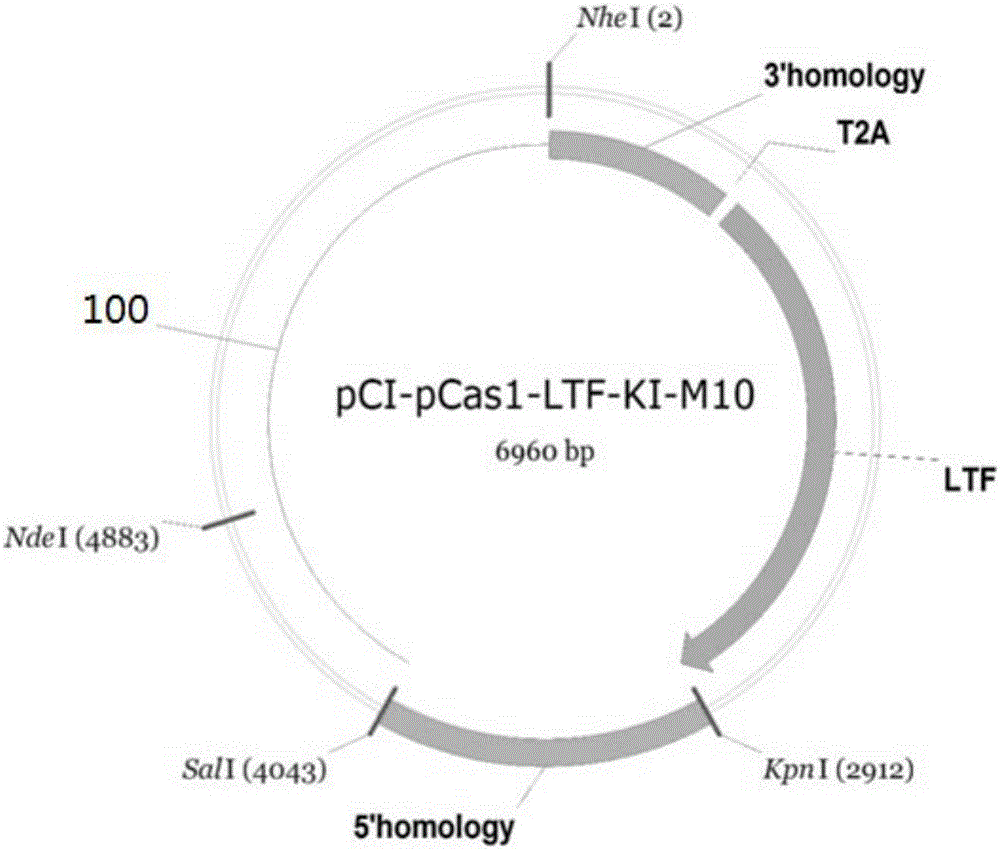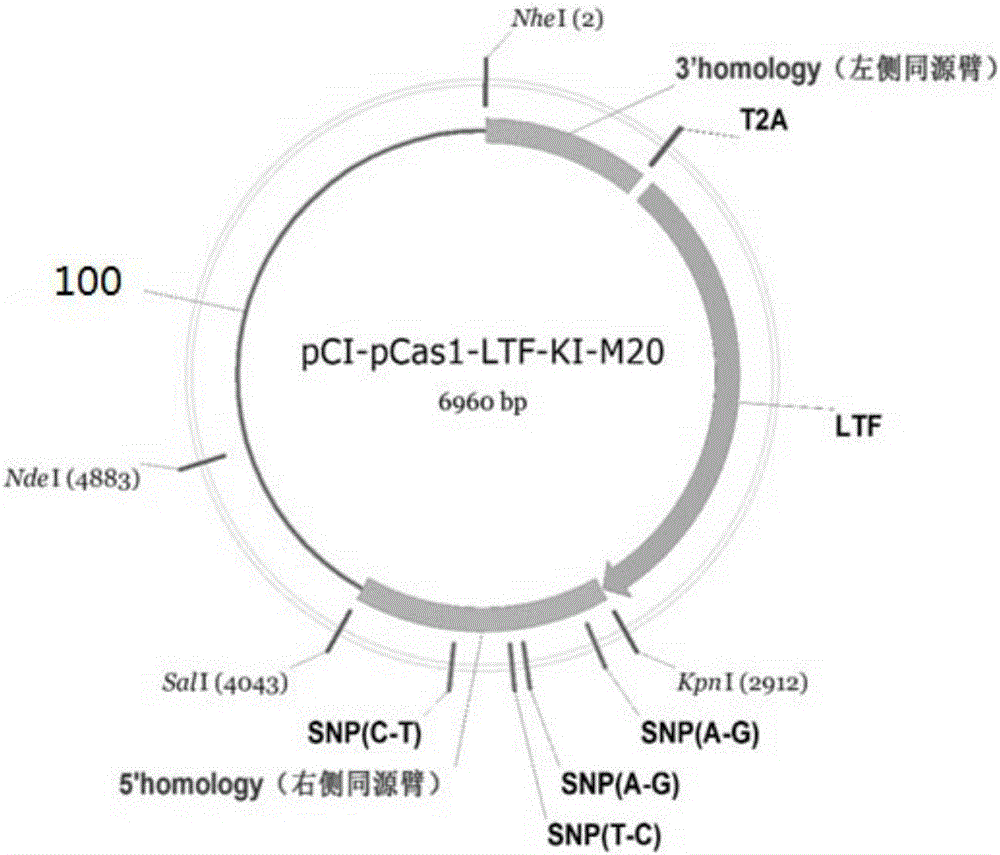Site-directed knock-in plasmid vector for porcine mammary gland-specific high-expression lactoferrin gene and application thereof
A technology of lactoferrin and plasmid carrier, which is applied in the direction of carrier, nucleic acid carrier, and the use of carrier to introduce foreign genetic material, etc., can solve the problems of veterinary antibiotic abuse, low feed remuneration, economic loss, etc., to promote growth and development, improve health Level, the effect of significant economic benefits
- Summary
- Abstract
- Description
- Claims
- Application Information
AI Technical Summary
Problems solved by technology
Method used
Image
Examples
Embodiment Construction
[0020] refer to figure 1 , a site-specific knock-in plasmid vector for high-expression of lactoferrin gene in porcine mammary gland, with the 25251-25981 region of the CSN1S1 gene reference sequence in NCBI (GenBank: EU025875.1) as the left homology arm and the 25984-27112 region as the right Side homology arm, introduce NheI restriction site at the 5' end of the left homology arm, introduce SalI restriction site at the 5' end of the right homology arm, introduce KpnI enzyme at the 3' end of the right homology arm Cutting site, the T2A sequence and the CDS sequence of the porcine LTF gene are inserted between the left and right homology arms, thereby forming the key sequence of the homologous recombination site-directed insertion fragment.
[0021] refer to figure 2 , in a preferred embodiment, based on the pCI-neo MammalianExpression Vector plasmid of Promega Company, the T3 promoter, SV40late polyadenylation signal, Phage f1region and β-lactamase coding region sequence of ...
PUM
 Login to View More
Login to View More Abstract
Description
Claims
Application Information
 Login to View More
Login to View More - R&D
- Intellectual Property
- Life Sciences
- Materials
- Tech Scout
- Unparalleled Data Quality
- Higher Quality Content
- 60% Fewer Hallucinations
Browse by: Latest US Patents, China's latest patents, Technical Efficacy Thesaurus, Application Domain, Technology Topic, Popular Technical Reports.
© 2025 PatSnap. All rights reserved.Legal|Privacy policy|Modern Slavery Act Transparency Statement|Sitemap|About US| Contact US: help@patsnap.com



